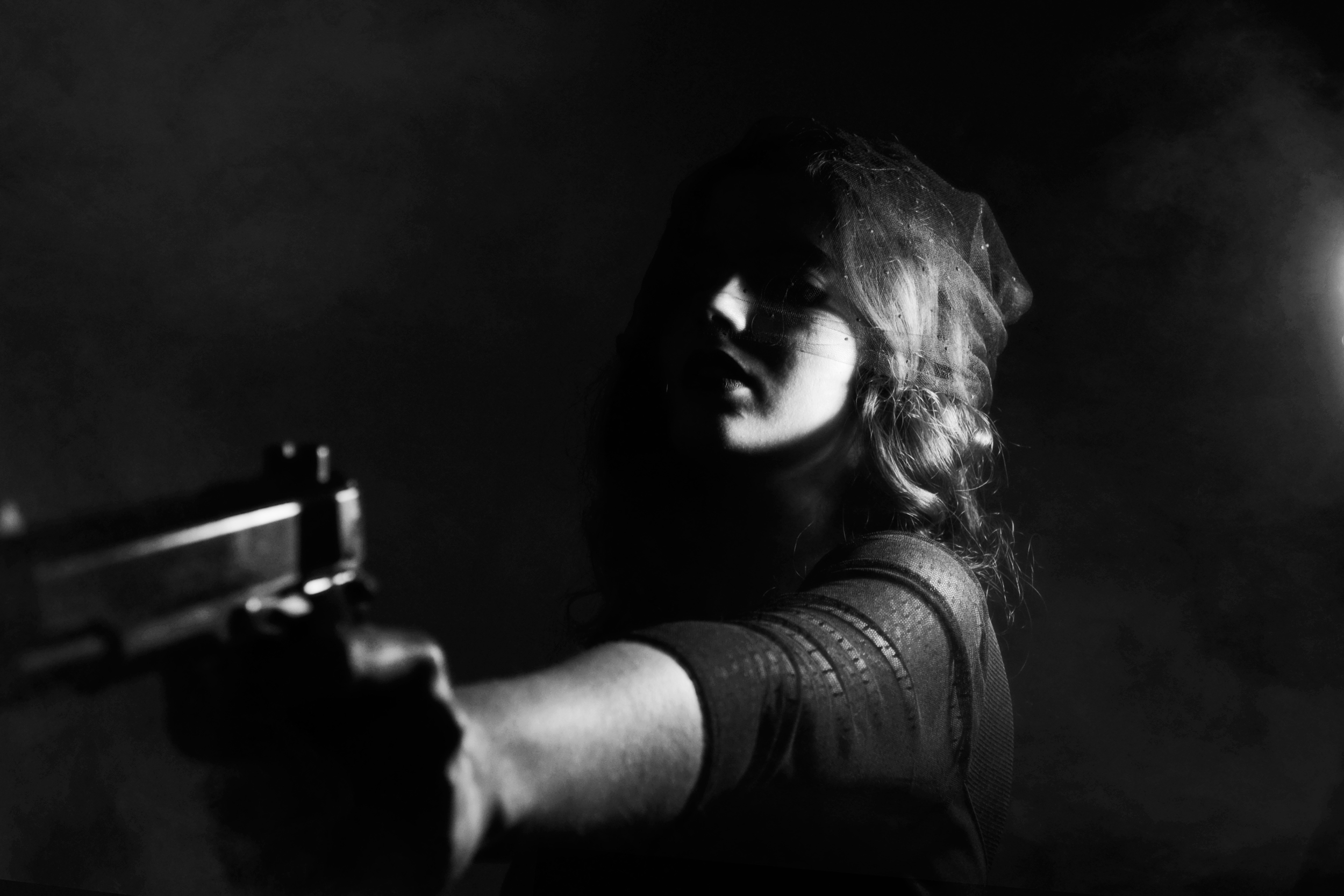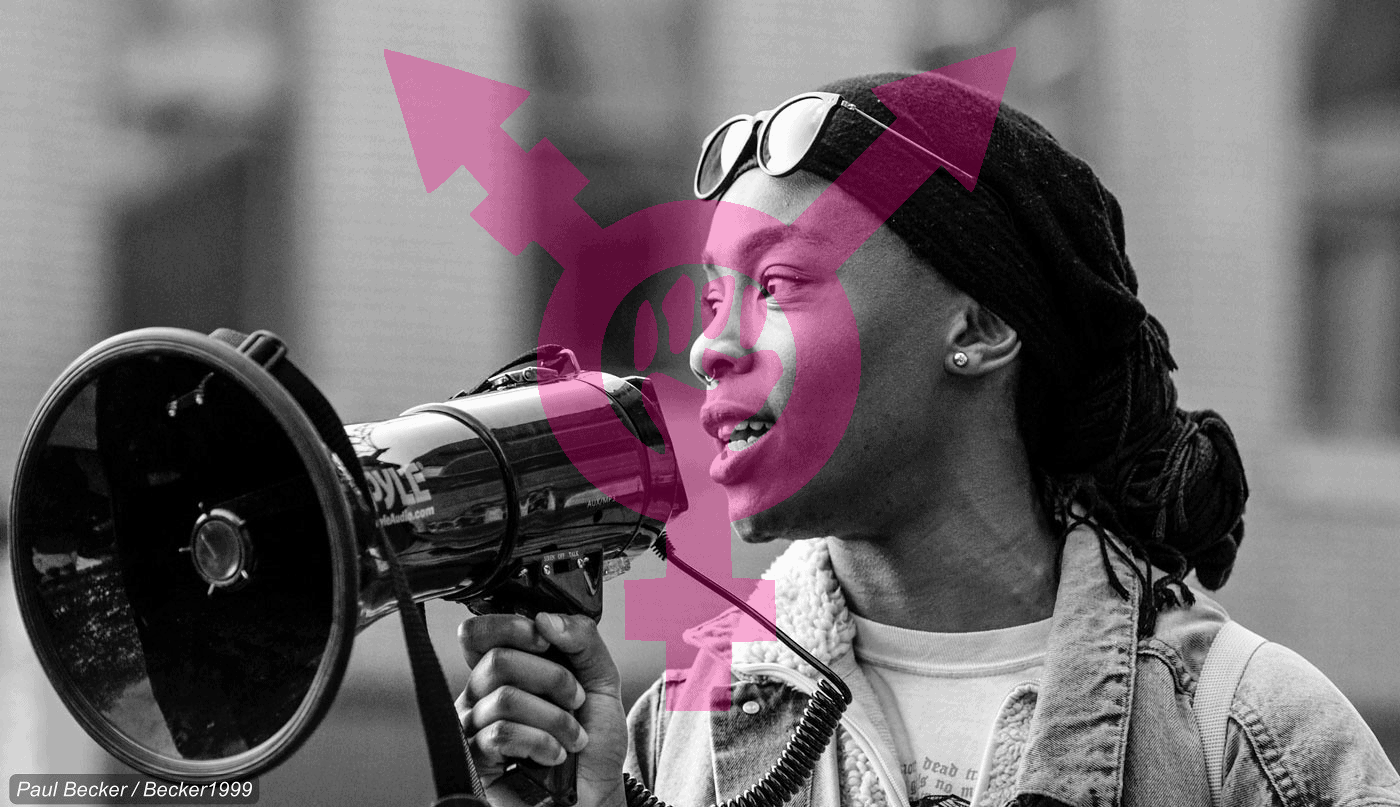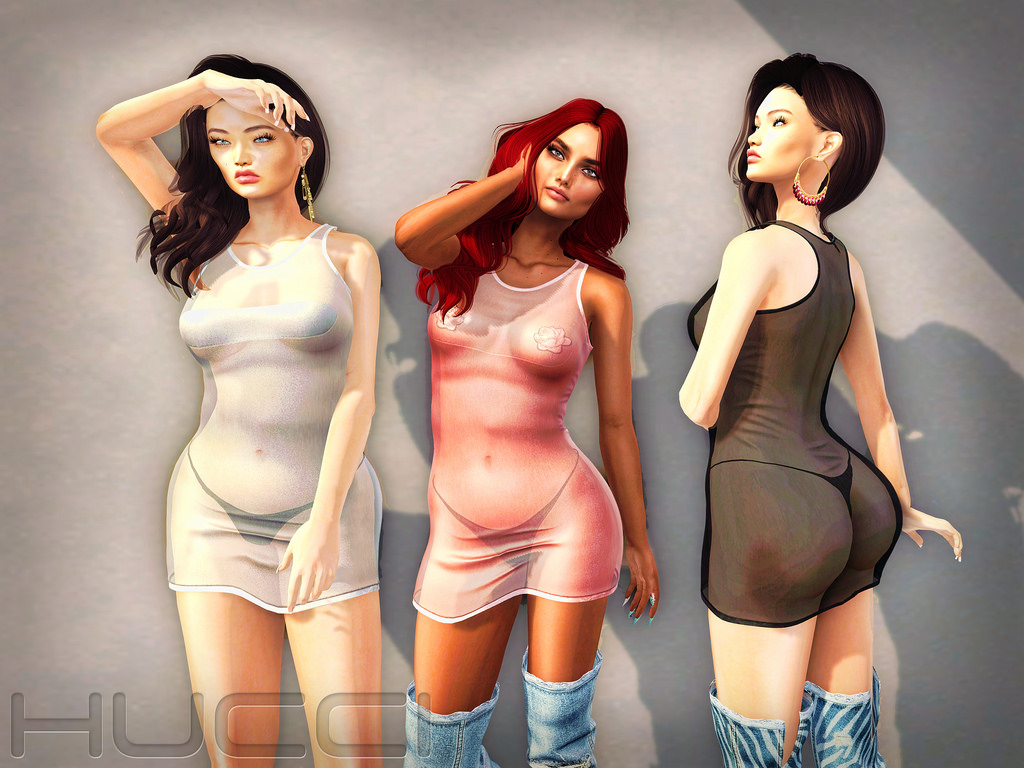Nashville, TN—The NRA is in town, and the convention center is covered in pink. A “Shoot Like A Girl” tent is set up outside, and booths like “Concealed Carrie” are selling purses designed to carry handguns. Slogans like “look cute while you shoot” and “silly boys, guns are for girls” are plastered on hats and T-shirts; pink pistols and rifles assert themselves against black and camo green counterparts.
The NRA is making a point to market to women and the feminist in me is, admittedly, conflicted about this. The NRA has long been a boys’ club. Phallic guns are (like guitars, I might add) frequently named after or compared to hot chicks. Posters, tattoos and bumper stickers of busty, half-naked women wielding firearms are common enough.
There are basically two pillars supporting the NRA’s female-centric campaign: guns as self-defense, and guns for sport. Sexual violence is oft invoked by the first pillar, criticizing college and other gun restrictions as damning for women. Predators, they argue, will have weapons irrespective of campus or local policy, so keeping them out of female hands is equivalent to condemning them to vulnerability and victimhood. The sporting camp claims not to be so politically inspired.
Sport Shooting: Shoot Like A Girl
Cristy Crawford at the Shoot Like A Girl tent was a beautiful blonde in pink, explaining in a bless-your-heart southern accent SLAG’s innocuous mission. “What we want is to educate women,” Crawford drawled, “because women that want to get involved are thirsty for that education, and we want to give them that opportunity.”
For Shoot Like A Girl, the issue is as simple as women providing women with nonthreatening access to shooting sports. I asked Cristy about the self-defense approach, and she said, “we are for either/or. If you want to go spend more family time shooting on the range…that’s a great family time opportunity there…if you choose to take personal responsibility for your own personal protection that’s also a great outlook as well.” Even after professing dual interest, she qualified her stance. “We’re just aimed at a quick introduction to shooting sports…whichever outlet you so choose to follow, we just give you the resources.”
Inside the tent, women try out rifles and pistols at simulated shooting ranges, and a guide helps find a comfortable cross-bow weight and fit. Cristy joked anecdotally about deflecting men hoping to buy weapons for their wives, comparing the process to buying your own trucks. It’s something you have to feel out for yourself, and the Shoot like a Girl tent is the place for that.
Observing that women feel more comfortable, empowered, and confident through learning from mother women, Cristy explains that Shoot like a Girl fills that void. “There’s just something special about women helping women,” Cristy said, half-winking at me through long, mascaraed lashes.
Guns and Girl Power?
Shoot Like A Girl is an initiative my inner Rosie the Riveter thinks she feels good about. Some of Cristy’s answers felt a little rehearsed, but a quick Google search of her name finds her decked out in camouflage and face paint, crawling through the mud or posing with shot game. Even the vegetarian in me admits that it all looks pretty bad ass.
For women who would hunt or participate in shooting sports, but are too nervous to break into male-dominated territory, organizations like “Shoot like a Girl” seem to really be empowering. But the other NRA women I spoke to admitted that most of the female gun-owners they knew didn’t carry for sport. That’s where things get more complicated.
The Self-Defense Pillar
Violence, namely rape, is used as the carrot to convince women to arm themselves. Several states are currently considering legislature to allow students to carry guns on campus. Nevada assemblywoman Michele Fiore declared “If these young, hot little girls on campus have a firearm, I wonder how many men will want to assault them,” confident that “the sexual assaults that are occurring would go down once these sexual predators get a bullet in their head.”
Besides the crucial fact that college rape is rarely of the dark-alley-with-force variety, firearms tend to put women in greater danger. One survey indicated that battered women were substantially less likely to use a weapon against a partner than to have it used against them, and indeed, in two-thirds of battered women’s households with a gun, that gun was used against the woman.
The presence of a gun in the home triples the risk of femicide for all women and increases the risk by 500% in domestic violence situations. Black women are murdered by men nearly 2.5 times more frequently than white women.
From 2001 to 2012, more U.S. women were murdered by an intimate partner with a gun than the number of US troops killed in action during the Iraq and Afghanistan wars combined.
Knowledge Is Power
A different Christy at another NRA booth described gun ownership as split between women who are interested in sporting and those who want “to be empowered and feel like they’re protected.” She did admit that “most of my friends, if they have a gun, it’s not for sport, it’s because of self-defense.”
When I asked about women killed in abuse situations, though, Christy had never heard the statistics. She reiterated that women are “definitely safer” with a gun, “as long as they know how to use it.”
Christy’s ignorance of risk is troubling. Is the NRA selling women an uninformed idea of empowerment—at the cost of their lives?
Educated Protection
For Deborah, selling breast cancer shirts, the most important question is, “if push came to shove, would you use [the gun] for safety reasons?” Deborah firmly maintained that “if you can’t answer ‘yes, I would use it,’ then you don’t need it.”
Acknowledging that domestic violence situations are more complicated, Deborah decided that leaving is the best strategy. Guns are dangerous “because then not only are you putting yourself in danger but you could end up taking someone’s life and you could end up spending your life in jail.” She mentioned Marissa Alexander, sentenced to 20 years for firing a warning shot, and told me her friend’s father took her friend’s firearm while she was experiencing abuse to avoid deadly consequences.
Deborah acknowledged the powerless feelings that come with abuse, but still felt self-defense outweighs potential danger, “if the mental capacity can get you there.”
“It’s a catch-22,” she concluded.
Choice And Chance: Carry That Weight
My anti-gun attitude, pockmarked by Cristy but emboldened after Christy, lost gravity after talking with Deborah, a highly intelligent woman who had clearly given great thought to women’s issues. She had seen the hazards of firearms and was still definitively pro-gun.
I left the NRA convention and went to a local bar, where a local woman told me she used to be pro-gun—until her friend was shot eight times in the back by her partner.
My understanding of intersectional feminism disallows me to discount Deborah, a black Washington DC breast cancer survivor whose experiences differ so much from my own, or the many other pro-gun women. And I absolutely encourage equal-opportunity access to sports. But I also wish to fight for everyday women whose lives are endangered or taken in the spaces where they are most vulnerable.
How do you weigh a policy that is supported even by the demographic it endangers?





